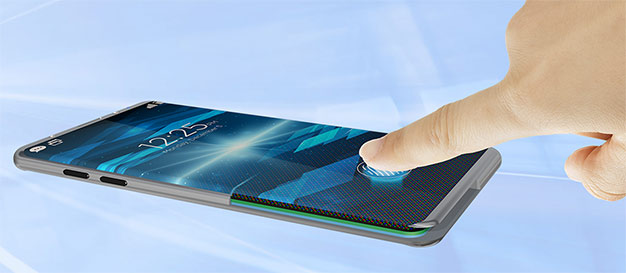Synaptics Clear ID: Your Next Smartphone Fingerprint Sensor Will Work Like This

For the last few years, flagship smartphones have gotten thinner and sleeker and have dedicated a much larger percentage of their front surface to the screen. Back in 2011, for example, the front surface of a Samsung Galaxy S2 was 64% screen, whereas the front of today’s Galaxy S8 is 84% screen. There are many more examples of the same trend from other manufacturers and what they all have in common is that as screens have gotten larger and bezels have gotten smaller, there is less real estate to work with for things like cameras, buttons, and sensors. Synaptics believes it has a solution to part of this problem with its Clear ID in-screen fingerprint sensor technology.
Fingerprint sensors have garnered much attention as of late, partly because of Apple’s decision to eschew a fingerprint sensor on the iPhone X in favor of facial recognition. The problem with facial recognition is that it takes longer and requires specific positioning and lighting to work properly. In certain lighting conditions or in some situations – perhaps when driving or in a meeting – facial recognition isn’t ideal, may not even work, and can detract from the user experience. Fingerprint sensors on the other hand allow users to more quickly and discretely unlock their devices, with a simple touch.
In an effort to not sacrifice a fingerprint sensor, while continually increasing the screen to bezel ratio on their devices, some manufacturers simply moved the sensor to the back. That’s an adequate trade-off for some users, but still isn’t perfect. If a device is laying flat on desk for example, you have to actually pick it up to unlock the device if the sensor is on the back. If the sensor was in the traditional location on the front a quick touch is all that’s necessary.
An ideal solution would be one that offers all of the features and convenience of a front-mounted fingerprint sensor that doesn’t require any physical button or bezel space. Synaptics’ Clear ID does all of this by placing an optical fingerprint sensor behind the screen. The technology works with the latest OLED displays, by leveraging the tiny spaces between the pixels. The display itself is actually used to light up the fingerprint as it touches the screen, and then the Clear ID sensor goes to work identifying the print and ultimately unlocking the device.
The Synaptics Clear ID in-screen fingerprint sensor is bonded to the underside of the display, beneath the OLED stack and cover glass. The total thickness of the entire stack, however, remains thin at only about 1.7mm. Clear ID also offers many of the same security and anti-spoofing benefits of Synaptics’ standard fingerprint sensors.
We got the chance to experiment with Clear ID on the Vivo X20 Plus UD and found it to work well. Once our fingerprint was added, unlocking the phone was simply a matter of waking it up and touching the screen. We should note that Clear ID worked well on both a bare phone and one that had a screen protector installed. Synaptics notes that lower-quality screen protectors that may affect how much light passes through the display stack could cause some problems, but on the phone we experimented with the screen protector had no discernable impact on the Clear ID sensor’s performance.
Synaptics hasn’t officially announced any other designs wins just jet, but we’re confident more phones are coming down the pipeline featuring Clear ID. In the short time we played with it, Clear ID worked well and it solves a problem smartphone manufacturers have been contending with for years.



